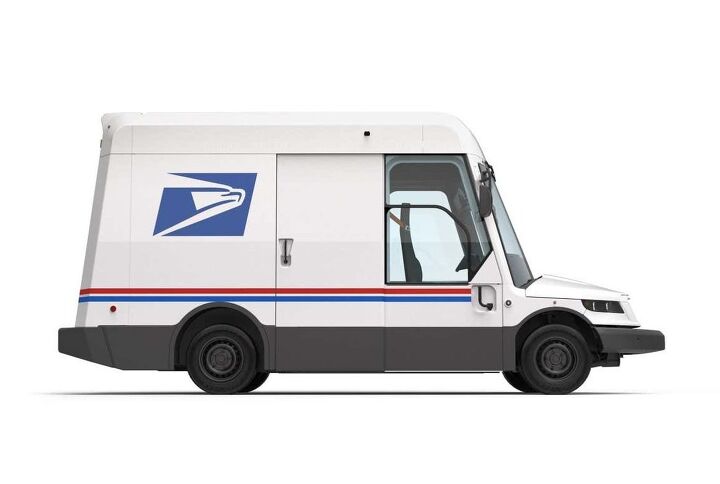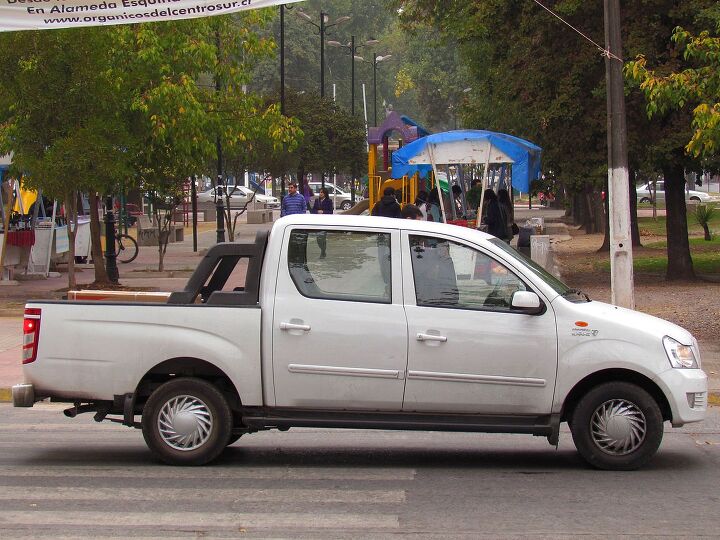#NextGenerationDeliveryVehicle
U.S. Postal Service Decides to Snub Electric Vehicles
The United States Postal Service (USPS) has been under pressure from the White House to replace its aging fleet with all-electric vehicles. But it’s looking like mail carriers will continue doing their jobs in oddly shaped trucks that burn gasoline.
While the Biden administration’s green agenda calls for government fleets to begin transitioning to EVs, the USPS had already decided to purchase 165,000 examples of the Oshkosh Defense NGDV that’s dependent upon liquid fuel. Despite the contractor saying trucks could be converted into battery electric vehicles and/or hybrids, the vast majority will be wholly reliant on internal combustion. The USPS has decided that it’s just not cost-effective or practical to do anything else and no amount of pressure from the White House will be changing its mind.
Money on the other hand…
Biden EPA Tells USPS More Mail Trucks Should Be EVs
Last spring, the United States Postal Service announced that it would finally be replacing its fleet of Grumman Long Life Vehicles (LLVs) that have more than lived up to their name. Having entered into service in 1987 to replace the Dispatcher Jeep, the LLV is scheduled to be replaced by 150,000 new mail trucks from Oshkosh Defense. While the government originally wanted to use an all-electric platform, it was believed that rural routes probably required an internal combustion vehicle. Preexisting government contracts with Oshkosh likely made it a compelling manufacturer, though it annoyed some of the smaller candidates. Workhorse even sued the USPS last summer for not selecting its hideous entrant, though the official complaint was that the government hadn’t given EVs a fair shake.
That now appears to be changing because the Biden administration and Environmental Protection Agency (EPA) have asked USPS to hold off on the $11.3 billion contract with Oshkosh so electric options can be reevaluated.
Lawmakers Introduce Bill Offering USPS More Money for EVs
Despite the United States Postal Service (USPS) having recently finalized its plan to award Oshkosh Defense a $482 million contract to replace its ramshackle fleet with sparkly new Next Generation Delivery Vehicles (NGDV), Postmaster General Louis DeJoy said it could only afford to make 10 percent of the fleet electric. The USPS would allegedly need another 3 or 4 billion dollars in government assistance to make BEVs happen in meaningful numbers and some lawmakers seem happy to oblige.
A bill sponsored by House Representative Jared Huffman (a California Democrat), introduced on Monday, seeks to allocate $6 billion to increase the number of EVs used by the USPS — with the stipulation that at least 75 percent of the motor pool be zero-emission vehicles. The original plan estimated expenditures of roughly $6.3 billion over the duration of the 10-year program to modernize the United States’ postal fleet. But the service ultimately decided to go with Oshkosh’s internal combustion model, rather than the electric prototypes offered by other manufacturers.
Mail's Here: USPS Picks Oshkosh Defense NGDV
The United States Postal Service (USPS) has revealed its new mail truck after a 6-year competition, selecting the duck-billed option from Wisconsin-based defense contractor Oshkosh. Its Next Generation Delivery Vehicle (NGDV) will officially replace the Grumman Long Life Vehicle (LLV) starting in 2023. Though the LLV spent the last 20 years being gradually supplanted by anything large enough to haul a bag of mail, it’s technically the last vehicle commissioned for use by the USPS.
Sadly, the postal service’s decision also represents a major loss for Ohio-based Workhorse. Its battery electric W-15 seemed to represent the government’s greener ambitions and was capable of 80-mile journeys before a gasoline-powered range extender kicks on. While a smart design, we think the manufacturer would have been better served by having ties to the military, like Oshkosh and Grumman. Workhorse’s share price has been falling ever since news broke that the USPS wouldn’t be needing its services, however analysts are under the impression that it will eventually rebound.
Your Next Mail Truck? NHTSA Document Previews Mahindra USPS Vehicle Prototype
The United States Postal Service put out a call for bids for a new delivery vehicle to replace its aging Grumman LLV a couple of years ago. We haven’t heard much about the process since then, other than the fact that the USPS secured funding and selected five finalists.
We recently uncovered a NHTSA filing submitted by Mahindra Automotive North America that may give us a better idea of what we can expect for the future mail truck.
Mahindra filed VIN documentation for 10 configurations of their version of the Next Generation Delivery Vehicle in May of this year. The document shows two-wheel drive, four-wheel drive, gasoline and mild hybrid versions as required by the USPS bid.



















Recent Comments